In today’s world, where smartphones, tablets, and even laptops have become essential travel companions, in-car charging solutions are no longer a luxury—they’re a necessity.
Automakers have responded with an abundance of USB ports, wireless charging pads, and even household-style outlets in modern crossovers.
But while these features are designed to offer convenience, not all are implemented with user-friendliness in mind.
One of the most overlooked design flaws is how the placement of charging ports interferes with cupholders—a small inconvenience that can quickly become a daily annoyance.
In this article, we explore two distinct groups of crossovers: those where charging ports block cupholders and those where clever design ensures both functions coexist peacefully.
We dive into five models where poor layout choices compromise functionality, making you choose between charging your phone or holding your coffee.
Then, we spotlight five vehicles that get it right, offering ergonomic designs where device charging doesn’t come at the cost of daily convenience.
By the end of this guide, you’ll have a deeper understanding of how seemingly minor design decisions can impact real-world usability—and which crossovers are best suited to balance modern tech needs with practical interior layout.
Also Read: 5 Cars That Feel Planted At 80 MPH And 5 That Float Or Wobble
5 Crossovers With Charging Ports That Block Cupholders
Modern car interiors are evolving rapidly, with digital connectivity and tech integration taking center stage. Wireless charging pads, USB-C ports, and multiple device interfaces have become standard even in budget-friendly crossovers.
However, with all these advancements, automakers sometimes overlook one critical aspect of interior design: ergonomics. Nowhere is this more evident than in the awkward positioning of charging ports near cupholders, a frustrating oversight that impacts both comfort and functionality.
In many crossovers, the center console becomes a hub for charging devices and storing beverages.
But when charging ports or pads are placed directly in front of, above, or even inside cupholders, drivers are often forced into a lose-lose situation: either forgo charging a device or lose a space for holding a coffee cup, water bottle, or soft drink.
Worse still, many charging pads are located in such a way that a device laid flat overlaps or physically blocks access to at least one cupholder. Spills become more likely, and the risk of damaging expensive electronics increases.
This section highlights five crossover SUVs that, despite offering modern tech conveniences, suffer from design missteps that cause their charging ports or pads to interfere with the cupholder layout.
These aren’t poorly made vehicles—on the contrary, many of them are popular, high-quality models. But they exemplify how tech integration can sometimes be implemented at the expense of practical, everyday usability.
If you’re a commuter who relies on both caffeine and a fully charged phone—or a parent juggling snacks, drinks, and navigation—these flaws can become daily pain points.
By pointing out these specific models, we aim to bring awareness to these real-world annoyances and help future buyers make more informed decisions.
1. Toyota RAV4
The Toyota RAV4 is one of the best-selling crossovers in the world, and for good reason. It offers reliability, solid fuel efficiency, a comfortable ride, and a strong suite of tech and safety features.
However, for all its strengths, the RAV4’s interior layout introduces one frustrating quirk for everyday users: the placement of its wireless charging pad and USB ports directly in front of the cupholders, which causes an ongoing battle between beverages and devices.
In most trims equipped with a wireless charging pad, the pad is located on a horizontal tray just below the center climate controls, a few inches in front of the dual front cupholders. At first glance, this may seem like a smart, out-of-the-way location.
But in practice, it often leads to overlapping space usage. When a phone is placed on the pad—especially larger models like the iPhone 14 Pro Max or Galaxy S24 Ultra—it protrudes toward the cupholders, encroaching into the space where a taller drink or mug might otherwise sit.
In some situations, the phone actually tilts up against a cup or bottle, especially when the vehicle accelerates or brakes, causing the device to move slightly or disconnect from the charger.
The result is a scenario where neither item—the phone nor the drink—is stable. Drinks can spill more easily, and devices may slide or shift during driving.
This issue is exacerbated when using a wired connection, as the cable itself often hangs down and obstructs one of the two cupholders entirely.
To make matters worse, the tray holding the wireless charging pad is shallow and lacks a lip or groove to secure larger phones.
This means any minor movement, like a bump in the road, can slide the phone out of position, interrupting the charge and pushing it into beverage space.

Toyota could improve this by raising the charging pad higher or moving it into the center armrest console, away from high-traffic zones.
While the RAV4 remains a solid all-rounder, the cupholder conflict is a notable usability flaw for those who regularly charge their devices on the go and carry drinks.
2. Ford Escape
The Ford Escape has undergone several redesigns over the years, with the latest models emphasizing sleek styling, improved fuel efficiency, and a more refined interior.
However, despite its many upgrades, one persistent design flaw stands out for tech-savvy drivers and frequent commuters alike: the conflicting placement of charging ports and cupholders in the center console.
In models equipped with a wireless charging pad—particularly the Titanium and higher trims—the pad is located at the base of the center stack, positioned horizontally between the dashboard and the front cupholders.
This placement is awkward for several reasons. First, many modern smartphones do not fit comfortably within the pad area, especially with a case on. The result is a phone that juts out into the path of the cupholders, limiting access or preventing certain drinks from fitting altogether.
When using traditional USB-A or USB-C ports (located just above the charging pad), cables dangle down over the cupholders and often interfere with beverage placement.
If you plug in a phone while also trying to use both cupholders, you may find that one of the drink slots is effectively blocked by wires, or that your drink knocks into the charging cable when reaching for it.
The problem worsens when using both ports at once—for example, charging a phone and a passenger’s tablet—because the overlapping cables become tangled and drape directly over the only two cupholders in the front row.
The Escape’s cupholders themselves are positioned side-by-side rather than offset, so there’s no vertical staggering to help accommodate larger drinks.
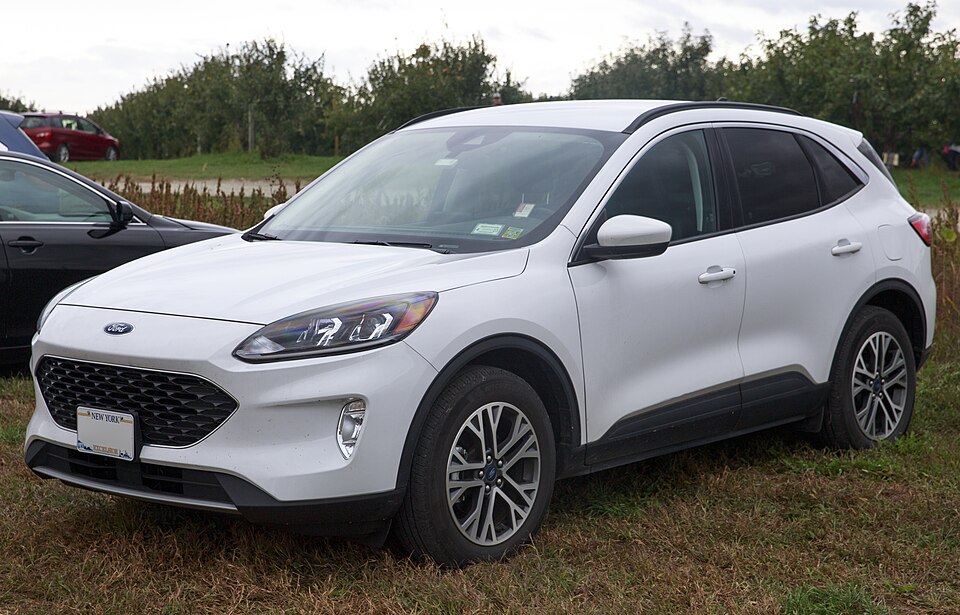
With the charging pad already encroaching on this space, taller bottles or travel mugs have to be carefully positioned—or avoided altogether—if a phone is being charged at the same time.
To its credit, Ford has included generous storage space elsewhere in the cabin, such as the deep center console bin and door pockets. However, these do not compensate for the central congestion caused by poor coordination between tech and utility.
For those who routinely charge devices while driving and rely on accessible cupholders for coffee or water, this layout can quickly become a daily irritation.
In summary, the Escape’s charging layout is a classic example of how technology-forward features can backfire when not ergonomically considered within the broader context of real-world use.
3. Volkswagen Tiguan
The Volkswagen Tiguan is widely praised for its European styling, spacious interior, and smooth driving dynamics. However, its interior tech layout poses a challenge when it comes to simultaneous use of charging ports and cupholders—a design quirk that frustrates many owners.
In Tiguan models equipped with the wireless charging feature, the charging pad is located directly in front of the dual cupholders in the center console. While this spot seems convenient at first glance, it creates a functional conflict.
Phones placed on the charging pad often extend over the cupholder space, especially larger models like the iPhone Pro Max or Samsung Galaxy Ultra, making it difficult or impossible to use both cupholders at the same time.
Moreover, the depth of the charging pad tray is shallow, and there’s no raised edge or barrier to keep devices securely in place. This results in phones sliding or tilting during driving, increasing the risk of disconnection from the charger or accidental spills if a drink is in the adjacent cupholder.
The traditional USB ports also contribute to the problem. Located above the charging pad, these ports require cables that hang down and often rest directly over or inside the cupholders.
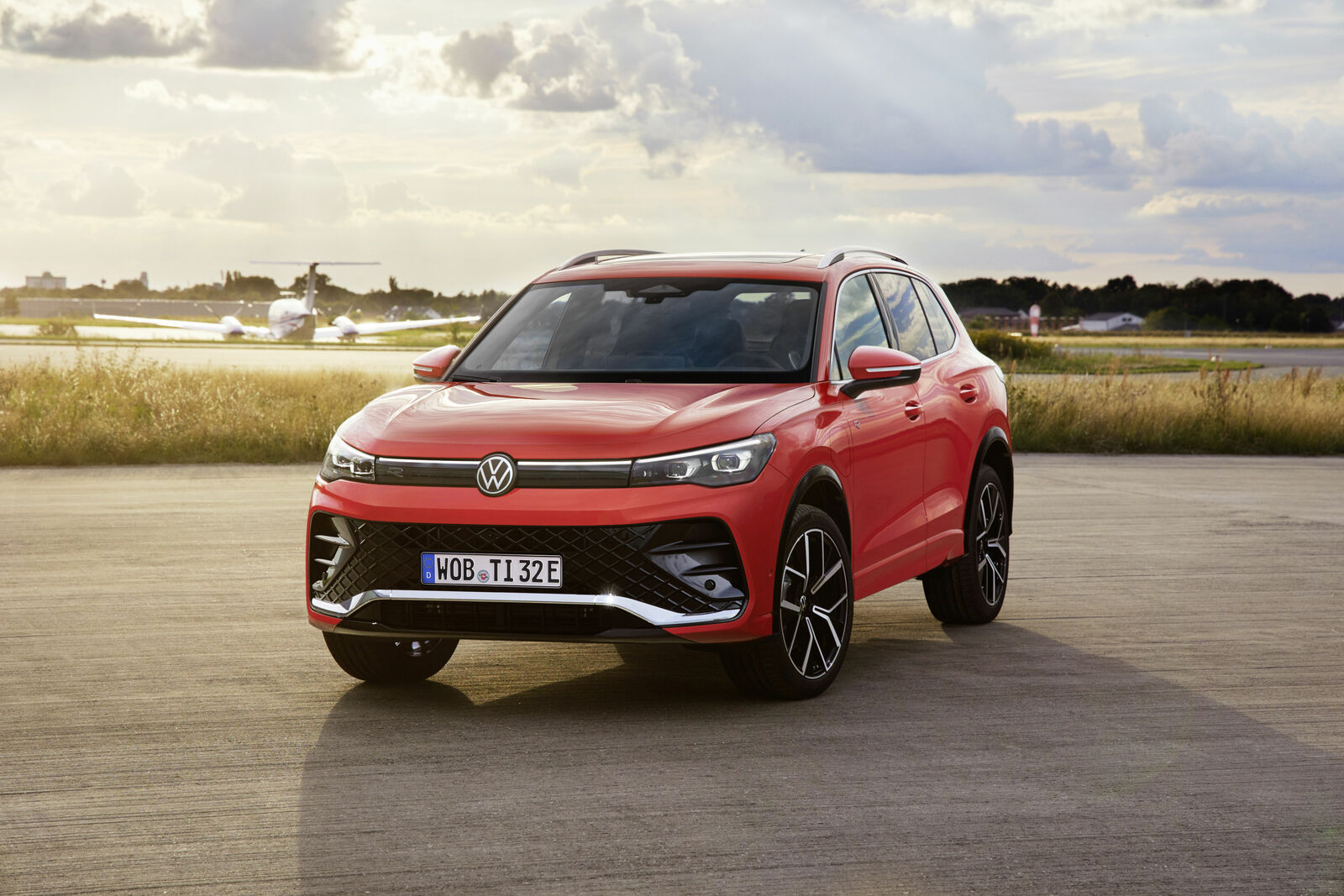
This cable intrusion limits the effective size of the cupholders and creates a tangled, inconvenient environment for the driver and front passenger.
Tiguan’s cupholders are designed side-by-side with no staggering or elevation difference, leaving no room for larger mugs or bottles to fit comfortably alongside a charging device. Additionally, the placement of the gear shifter close to the cupholders and charging pad compounds the cramped feeling.
Despite the Tiguan’s strengths in style, comfort, and driving experience, this oversight in interior layout significantly impacts usability for drivers who depend on charging devices and need accessible cupholders during their daily commute or road trips.
Volkswagen could greatly improve user satisfaction by redesigning the charging pad location, perhaps integrating it into the center console armrest or moving it away from the primary cupholder area to prevent this awkward overlap.
4. Nissan Rogue
The Nissan Rogue is a favorite among compact SUV buyers for its comfortable interior, smooth ride, and family-friendly features.
However, one persistent complaint comes from the placement of its charging ports in relation to cupholders—a design issue that affects convenience during everyday use.
In Rogue models equipped with wireless charging, the charging pad is situated just ahead of the dual front cupholders, similar to many competitors.
While this seems logical in theory, in practice it often leads to interference between devices and beverages. Phones placed on the charging pad extend into the cupholder space, especially when larger phones with cases are used.
The physical layout of the center console is tight, with the cupholders located side-by-side and lacking vertical offset, meaning there is no allowance for a tall bottle or travel mug to fit comfortably next to a phone lying on the charging pad.
This forces drivers or passengers to either leave their drinks behind or risk placing them in precarious positions, increasing spill risk.
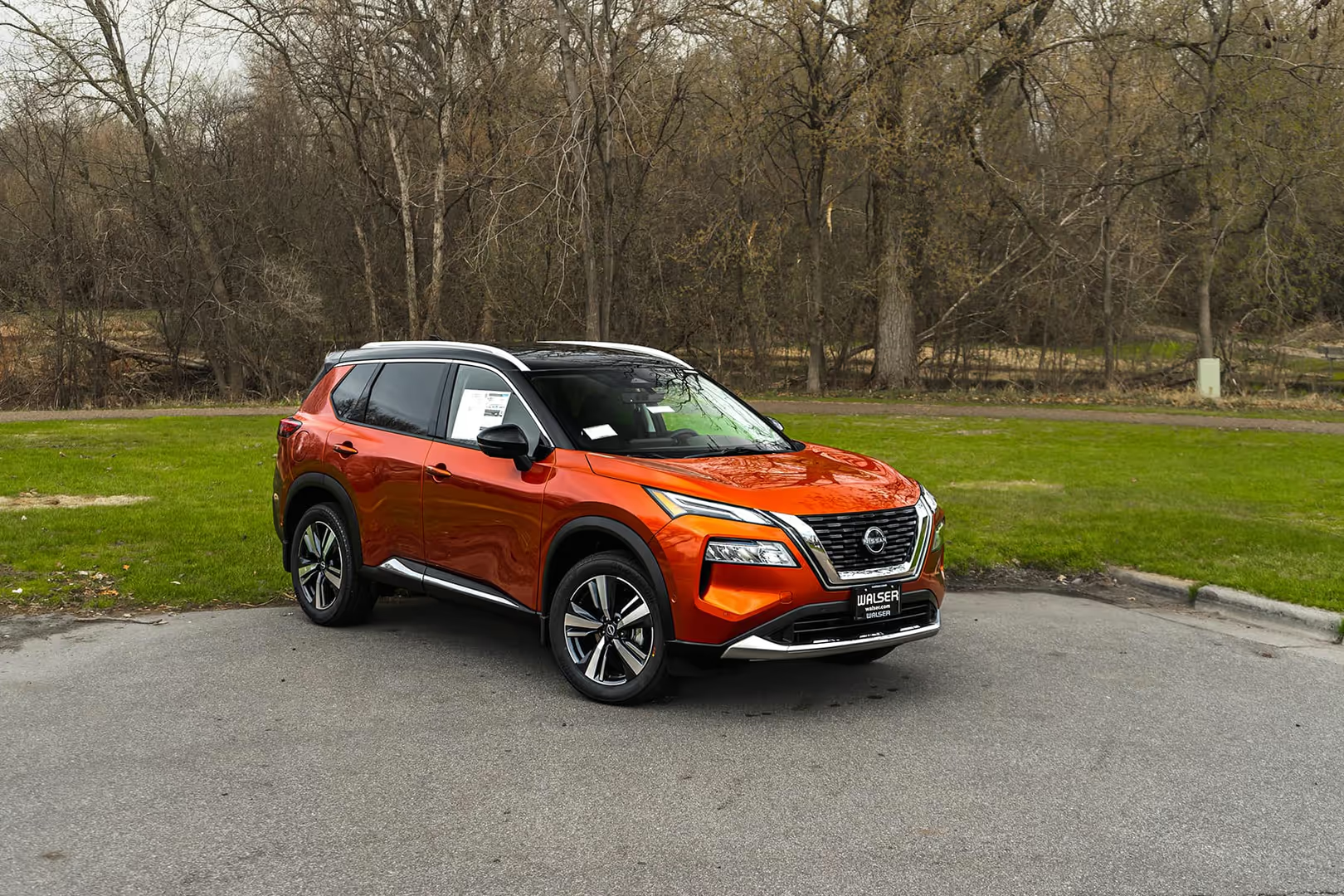
Additionally, the Rogue’s USB ports, placed above the charging pad, create their own problems. Charging cables often dangle directly over the cupholders, making it difficult to fit larger cups and sometimes causing cables to tangle or snag when reaching for drinks.
One subtle but important aspect is the height of the cupholders and charging pad area. The Rogue’s charging surface is relatively flush with the console, lacking any raised edges or dividers to prevent phones from sliding.
On bumpy roads, phones tend to shift, sometimes disconnecting from wireless charging or pressing against adjacent cups.
This layout impacts the daily usability for families or commuters who juggle multiple devices and beverages, turning what should be a simple convenience into a balancing act.
While the Nissan Rogue excels in many areas, this particular design oversight highlights the importance of ergonomics in tech integration. Buyers who frequently use both charging and cupholders should be aware of this limitation.
5. Jeep Cherokee
The Jeep Cherokee is known for its rugged capability and comfortable interior, making it a popular choice for those seeking adventure without sacrificing daily usability.
However, despite its many strengths, the Cherokee’s interior layout presents a notable inconvenience regarding the placement of charging ports and cupholders.
In models equipped with wireless charging, the charging pad is positioned directly in front of the dual front cupholders, occupying a horizontal tray space that frequently overlaps with the cupholder area.
While the pad itself is easy to access, larger smartphones placed on it tend to protrude into the cupholder zone, restricting the space available for beverages.
This overlap can force drivers and passengers to choose between charging their phones and securing their drinks, a trade-off that undermines the convenience that the technology is supposed to provide.
Additionally, the lack of any raised lip or secure holder on the charging pad means devices can shift while driving, potentially interrupting the charging connection and increasing the risk of spills.
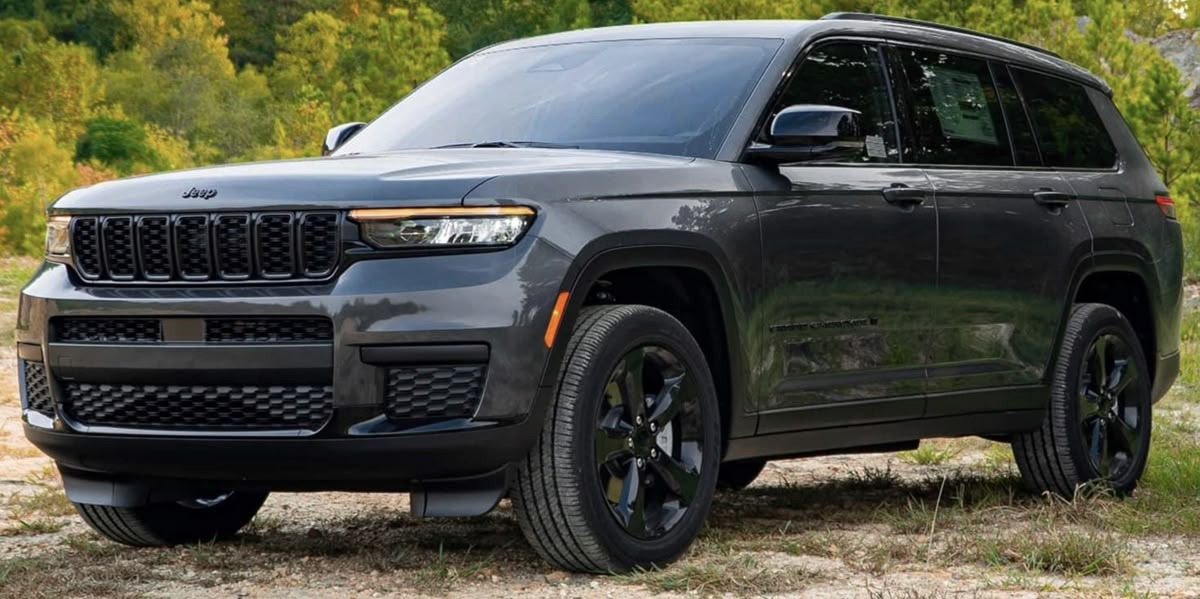
The Jeep Cherokee’s USB ports, located above the charging pad, exacerbate the issue. When devices are connected via cable, the cords dangle and obstruct access to one or both cupholders, creating a cluttered and awkward space that can be difficult to navigate, especially while driving.
The cupholders themselves are side-by-side and relatively shallow, which further compounds the problem. Taller bottles or larger mugs often won’t fit comfortably alongside a device on the charging pad, limiting the overall functionality of the center console area.
While the Cherokee excels in off-road capability and offers a well-appointed cabin, the interior tech layout could benefit from reconsideration.
Moving the charging pad to a less intrusive location or redesigning the cupholder configuration could significantly enhance user experience.
For drivers who prioritize both device charging and convenient beverage storage, the Jeep Cherokee’s current setup presents a daily challenge that detracts from its otherwise well-rounded appeal.
5 Crossovers With Charging Ports That Don’t Block Cupholders
As more vehicles incorporate advanced tech features like wireless charging and multiple USB ports, thoughtful interior design becomes crucial for balancing convenience and usability.
While some crossovers falter by placing charging ports in locations that interfere with cupholders, there are many models that get it right.
These vehicles show how smart design can seamlessly integrate charging capabilities without sacrificing space for beverages or daily essentials.
This section highlights five crossover SUVs that excel in this area by ensuring that charging ports and cupholders coexist harmoniously.
Whether through clever placement, staggered layouts, or creative use of storage compartments, these models maintain an uncluttered and functional center console that meets the needs of modern drivers and passengers.
In these crossovers, you’ll find charging pads tucked away in areas that don’t encroach on cupholder space, USB ports positioned to avoid cable clutter, and cupholders sized and spaced to comfortably accommodate a variety of drink containers.
These designs show that with careful planning, vehicles can provide tech conveniences without forcing compromises.
If you’re someone who frequently uses multiple devices, enjoys your coffee or water during drives, or simply values an ergonomic and user-friendly interior, this list will guide you toward crossovers that deliver on both fronts.
Beyond just specs and performance, interior layout plays a critical role in daily satisfaction—especially on long commutes or family road trips where charging and hydration are equally essential.
These five crossovers represent the best balance of tech integration and practicality in today’s market, providing a more enjoyable and hassle-free driving experience.
1. Honda CR-V
The Honda CR-V is a perennial favorite in the compact crossover segment, known for its reliability, spacious cabin, and user-friendly features.
One of its standout interior traits is the thoughtful integration of charging ports without compromising cupholder access, making it a practical choice for tech-savvy drivers and families alike.
In the latest CR-V models, the wireless charging pad is positioned to the right of the center console, slightly recessed and away from the dual front cupholders.
This design allows drivers to place their phones securely on the pad without encroaching on beverage space. The pad’s location ensures that even larger phones fit comfortably without overlapping or blocking the adjacent cupholders.
Additionally, the CR-V offers multiple USB ports located inside the center console storage bin and in the dashboard area, which helps keep charging cables out of the way. This reduces clutter and prevents cables from dangling over cupholders, a common nuisance in many vehicles.
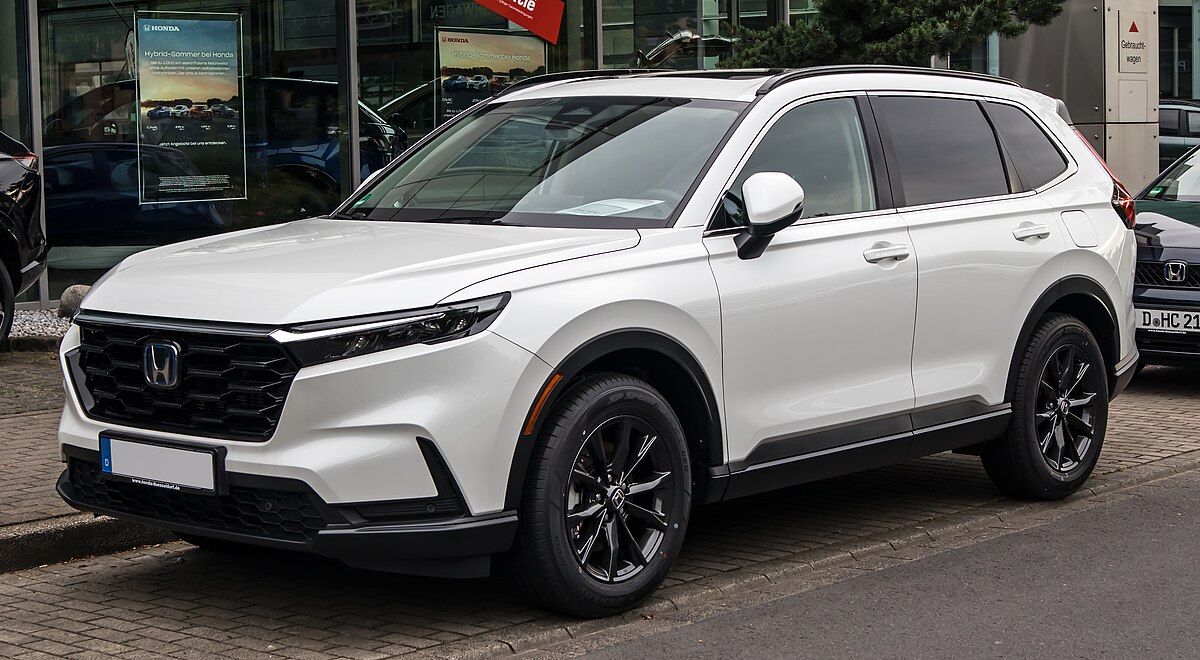
The cupholders themselves are well-sized and spaced, allowing for a variety of drink containers—from tall water bottles to wide coffee mugs—to fit comfortably without interference from charging devices. The offset layout also helps maximize usable space, making it easier to grab drinks on the go.
Honda’s attention to ergonomic details extends beyond just cupholders and charging ports. The center console features a practical design with ample storage, well-placed controls, and soft-touch materials that enhance comfort and convenience.
For drivers who rely on both hydration and device connectivity during their daily commute or road trips, the CR-V offers an excellent balance of functionality and technology. Its smart interior layout ensures that charging your phone won’t mean sacrificing your morning coffee spot.
2. Subaru Forester
The Subaru Forester is well-regarded for its excellent visibility, rugged capability, and practical interior layout. Among its many thoughtful design features, the way it handles charging ports and cupholders stands out as particularly user-friendly and well-planned.
In Forester models equipped with wireless charging, the charging pad is located within the center console storage compartment, rather than in the open cupholder area.
This placement keeps the charging station out of the way of beverages and daily essentials, ensuring that the cupholders remain completely free and accessible at all times.
Furthermore, USB ports in the Forester are placed inside the console bin and also near the dashboard, minimizing cable clutter in the front seating area.
This prevents cables from draping over or obstructing cupholders, which is a common complaint in other crossover designs.
The Forester’s cupholders themselves are spacious and offset, providing ample room for a variety of drink sizes and shapes. Their position within the console makes them easy to access without interference from charging devices.
This clever separation of charging and beverage areas reflects Subaru’s focus on practical, driver-centric design. It allows drivers to charge phones or other devices safely and conveniently without sacrificing cupholder space or risking spills.

For families and outdoor enthusiasts alike, this balance is key. Whether you’re fueling up your phone for navigation on a camping trip or simply enjoying a coffee during a daily commute, the Forester’s design ensures both needs are met without compromise.
In summary, the Subaru Forester’s interior layout stands as an example of how thoughtful tech integration can enhance usability and comfort in a compact crossover.
3. Mazda CX-5
The Mazda CX-5 has earned a reputation for delivering a premium driving experience in the compact crossover segment. One area where Mazda particularly shines is the intuitive interior design, especially regarding the placement of charging ports and cupholders.
In the CX-5, the wireless charging pad is located in a dedicated recessed compartment ahead of the center console’s dual cupholders, positioned so that phones can be placed securely without intruding on the beverage area. This separation allows drivers and passengers to charge devices without sacrificing cupholder accessibility.
Unlike some competitors that place USB ports near the cupholders—leading to tangled cables or blocked drink holders—the CX-5 offers multiple USB ports placed thoughtfully within the center console storage bin and on the dashboard.
This strategic positioning helps keep cables neatly tucked away, preventing them from interfering with drink placement or the driving experience.
The cupholders themselves are generously sized and feature a staggered layout, with one cupholder slightly behind the other. This design allows for taller bottles or mugs to fit comfortably alongside smaller cups, making it easier to juggle different drink containers without overcrowding.

Mazda also incorporates subtle design touches to enhance comfort and usability, such as soft-touch materials, ergonomic control placement, and a clean, uncluttered center console. These elements combine to create a cabin environment that feels both upscale and practical.
For drivers who want the latest tech without compromises, the CX-5’s layout is a compelling example of how attention to detail can significantly improve daily usability.
Whether charging multiple devices or enjoying beverages during long drives, Mazda’s approach keeps everything within easy reach and free from interference.
4. Hyundai Tucson
The Hyundai Tucson offers a compelling blend of style, technology, and practicality, especially when it comes to its interior layout.
One notable highlight is its smart placement of charging ports that do not interfere with cupholder usability, making it a favorite among drivers who want tech convenience without compromises.
In Tucson models equipped with wireless charging, the charging pad is located in a recessed area to the side and slightly lower than the dual cupholders, ensuring phones can be placed securely without obstructing beverage space.
This offset positioning allows larger phones to fit comfortably on the charger while keeping cupholders fully accessible.
Additionally, Hyundai places multiple USB ports inside the center console storage bin, which helps keep cables hidden and prevents them from dangling over or crowding the cupholders. This thoughtful cable management contributes to a clean and clutter-free center console environment.
The Tucson’s cupholders are generously sized and spaced, featuring a slight stagger that accommodates tall bottles and wide mugs alongside smaller cups. This layout ensures beverages stay secure without competing for space with charging devices.
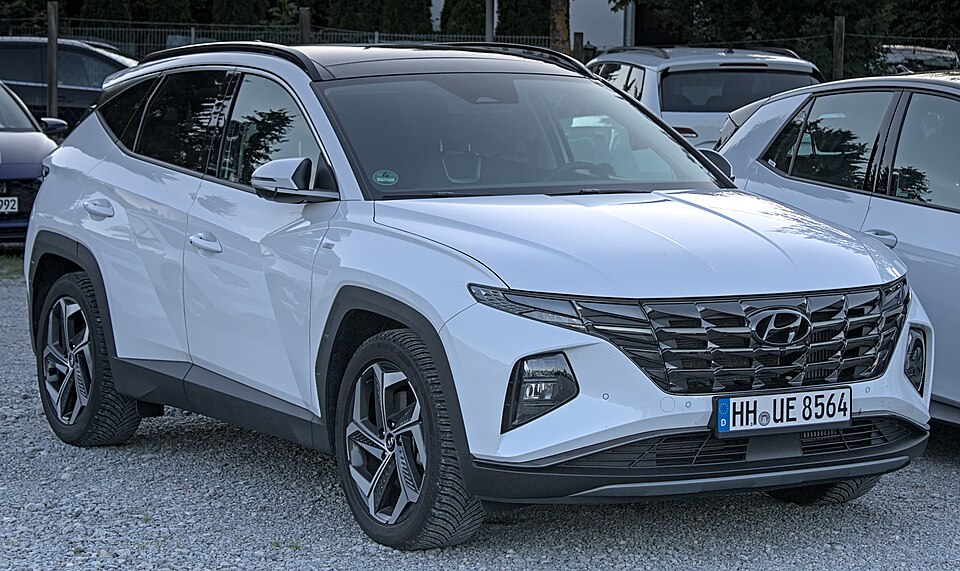
Beyond this, the Tucson’s interior boasts user-friendly features such as ample storage compartments, ergonomic controls, and quality materials, creating a comfortable and functional cabin atmosphere.
For drivers who want to keep their devices powered and their drinks close by without hassle, the Hyundai Tucson strikes a great balance. Its interior design prioritizes both tech integration and everyday usability, making it an excellent choice in today’s crossover market.
5. Kia Sportage
The Kia Sportage stands out in the compact crossover segment for its stylish design, comfortable ride, and well-thought-out interior features. A key aspect of its interior layout is the strategic placement of charging ports that keeps cupholder space free and accessible.
In recent Sportage models equipped with wireless charging, the charging pad is located to the left of the center console cupholders, recessed into a dedicated tray area.
This positioning means phones can be placed securely on the charging pad without overlapping or encroaching on cupholder space, allowing drivers and passengers to keep their beverages within easy reach.
Kia also thoughtfully positions multiple USB ports inside the center console storage compartment, minimizing cable clutter and preventing cables from interfering with the cupholders or passenger comfort. This careful cable management ensures that cords do not dangle or tangle, enhancing the overall neatness of the cabin.
The Sportage’s cupholders are well-sized and spaced with a slight vertical offset, accommodating a wide range of beverage containers, from tall bottles to wider mugs. This layout reduces the chance of spills and makes it easier to access drinks while driving.
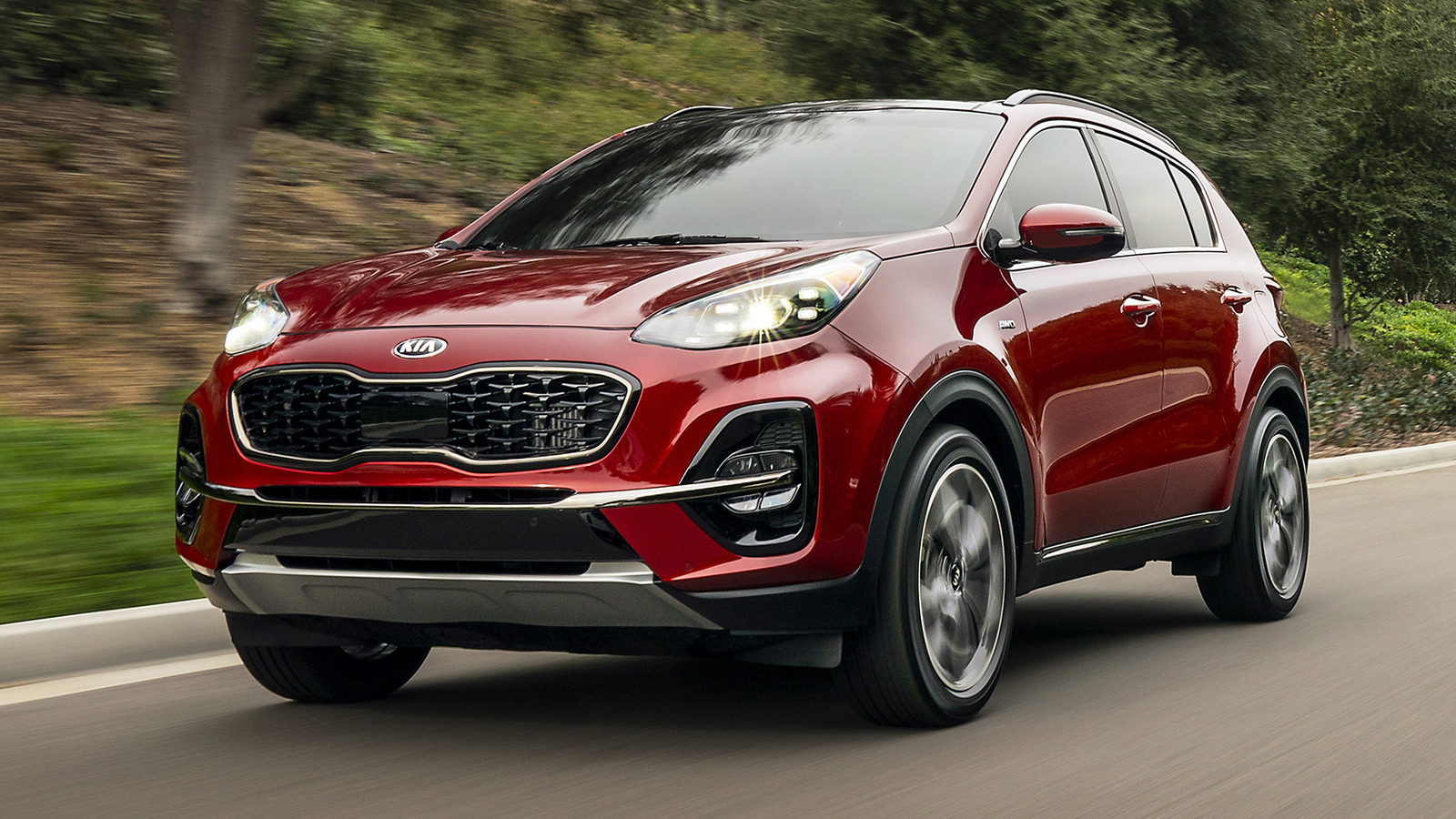
Beyond just cupholders and charging ports, the Sportage’s interior design emphasizes ergonomic comfort, with controls placed within easy reach, soft-touch materials, and ample storage compartments for everyday essentials.
For drivers who value both technology convenience and practical usability, the Kia Sportage offers an interior that balances these priorities well. The separation of charging and drink areas means fewer distractions and a smoother driving experience, whether on short errands or long trips.
In summary, the Kia Sportage’s intelligent interior layout demonstrates how thoughtful design can integrate modern tech without sacrificing everyday convenience, making it an excellent option in the crowded crossover market.
In today’s vehicle market, where connectivity and convenience are paramount, the placement of charging ports and cupholders within the interior can make a surprisingly big difference in everyday usability.
As we’ve seen, crossovers that thoughtfully separate these features offer a superior experience by allowing drivers to keep their devices charged without sacrificing essential cupholder space. This balance not only enhances comfort but also reduces distractions caused by tangled cables or awkward reaches for drinks and phones.
The first group of crossovers with charging ports that block cupholders illustrate some common design pitfalls.
When charging pads or USB ports encroach on beverage holders, drivers face practical inconveniences—from spilling drinks to struggling to fit larger mugs.
These drawbacks, while seemingly small, can add frustration on longer trips or daily commutes, detracting from the vehicle’s overall appeal.
Conversely, the second set of crossovers demonstrates how manufacturers can achieve a harmonious interior layout.
By placing wireless charging pads in dedicated trays or recessed areas, offsetting cupholders, and managing cables inside concealed compartments, these vehicles prioritize both technology and driver convenience. This careful attention to detail reflects a broader shift toward user-centric design in automotive interiors.
For buyers, understanding these nuances is valuable. A crossover with well-designed charging and cupholder arrangements can enhance day-to-day comfort and reduce distractions, improving safety and enjoyment on the road.
This is especially important for families, commuters, and tech-savvy drivers who rely heavily on their devices while needing to stay refreshed and hydrated.
Ultimately, as charging technology continues to evolve and become standard, automakers who invest in smart interior design will stand out.
Selecting a crossover that integrates charging ports without compromising cupholder access ensures that you get the best of both worlds—keeping your devices powered and your drinks secure throughout every journey.
Also Read: Top 5 Cars With Headlights That Fog Up Frequently

